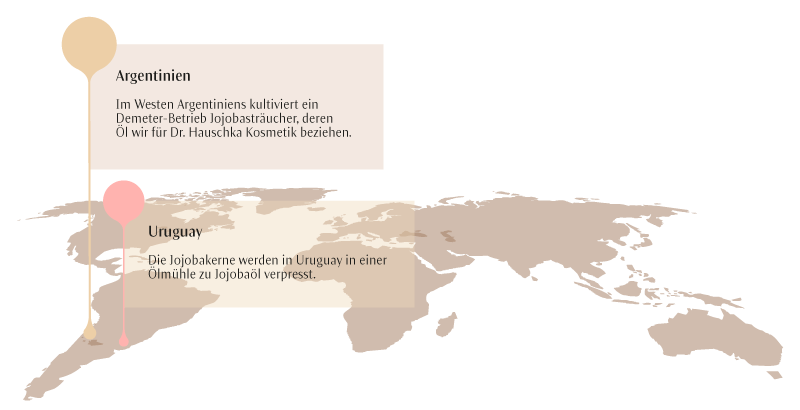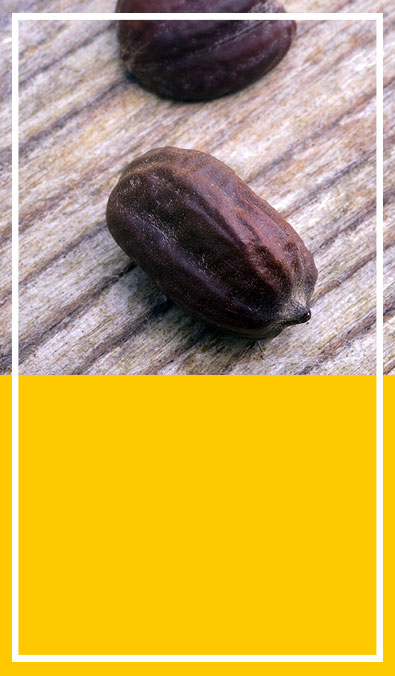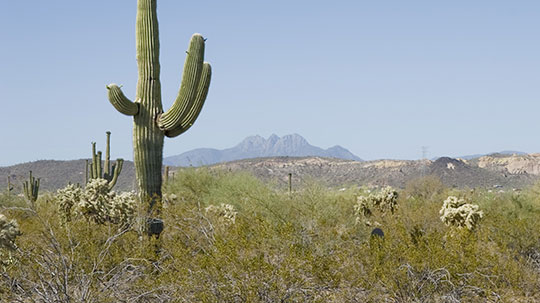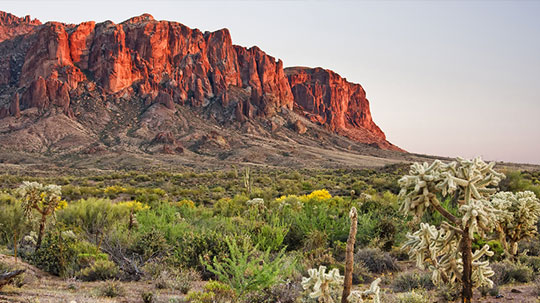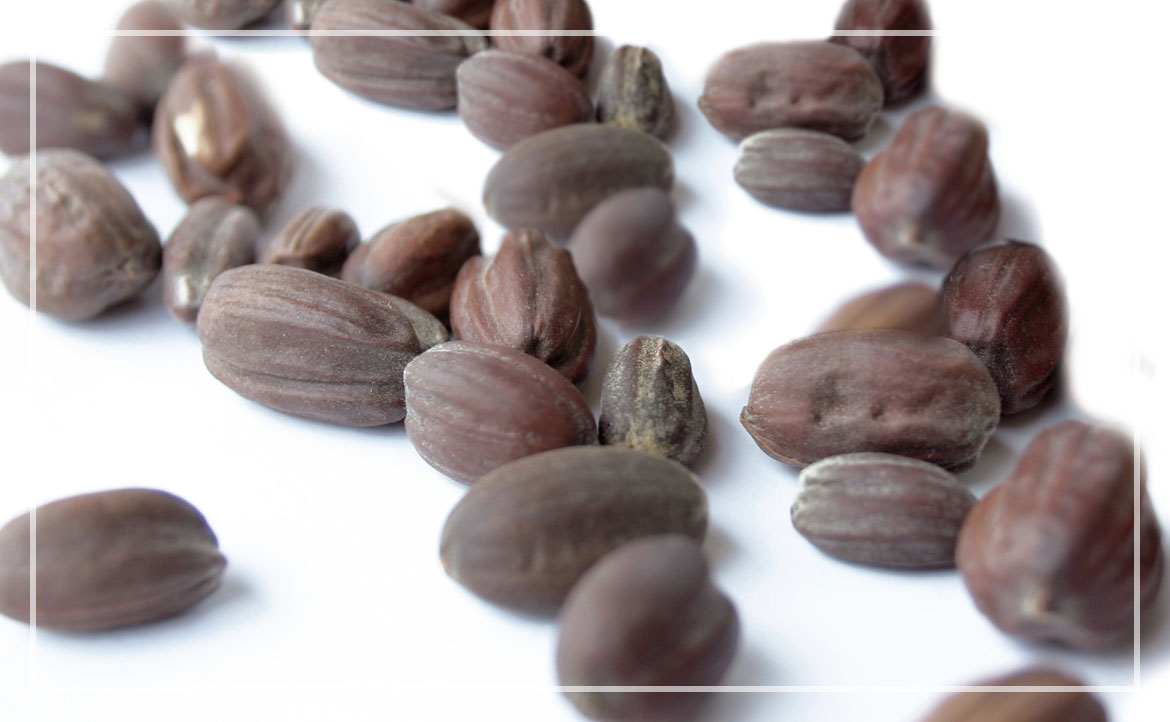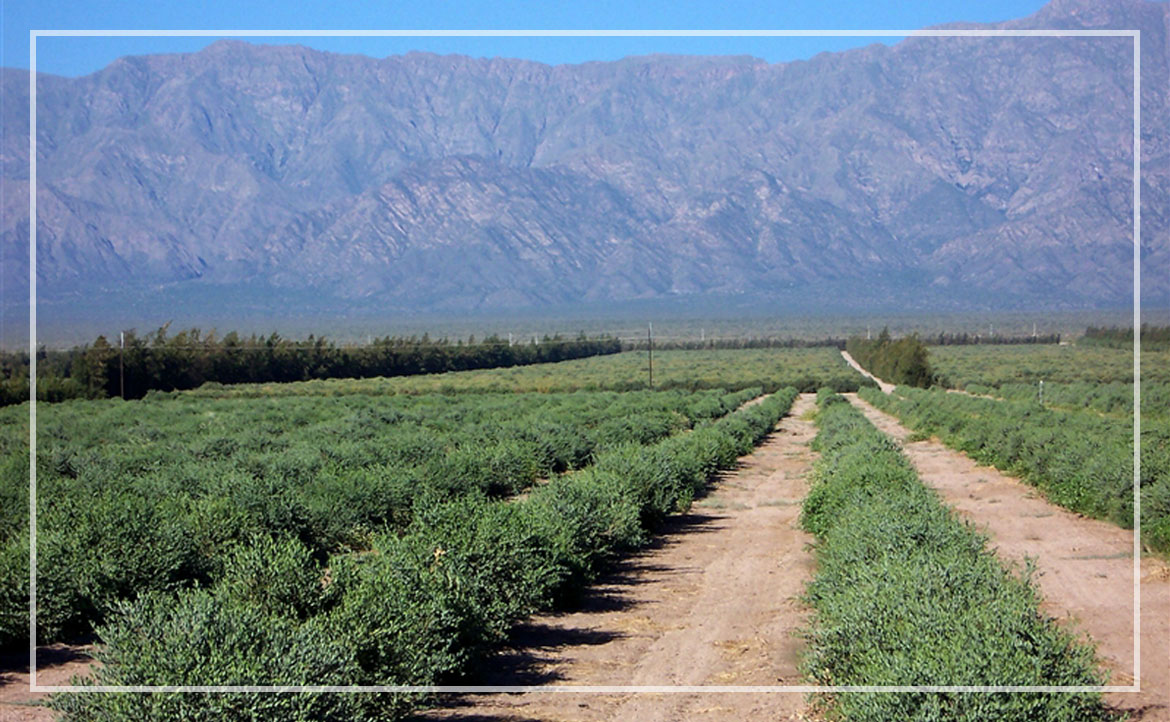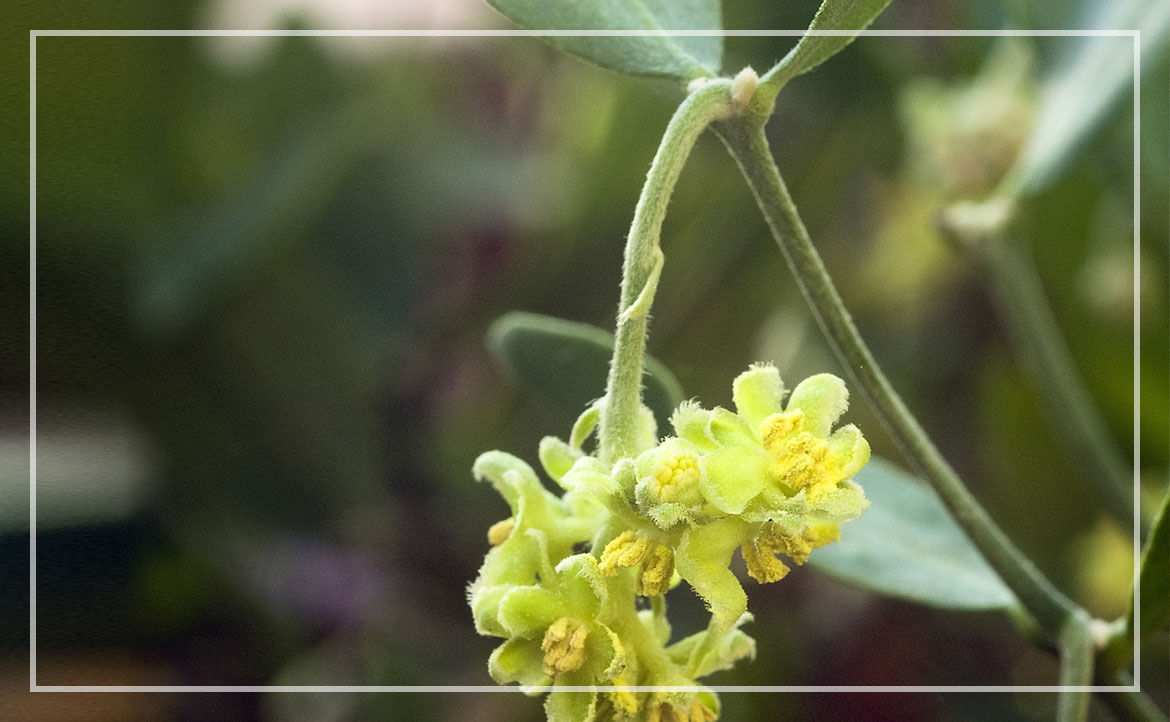Origin, cultivation and manufacture
We obtain jojoba for Dr. Hauschka Skin Care from a certified Demeter farm in Argentina. The company founder is Jorge Arizu and his cultivated fields are located at the foot of the Andes in an extremely dry area. Even the jojoba shrub, which is adapted to a dry environment, requires drip irrigation here. The water originates from a fountain on the farm. The jojoba shrubs stand in rows like long hedges where they are cultivated in compliance with biodynamic maintenance. When the jojoba shrubs are young, the limited water supply allows for the planting of aromatic herbs such as cumin, black cumin and chamomile between the rows. By the end of summer, the jojoba fruits are ripe and harvest time is until the end of autumn. The washed jojoba seeds are dried in the sun and then transported by truck to the own oil mill in Uruguay. It operates with special presses, filters and piping systems to rule out any contamination of the jojoba oil. From there, the cold-pressed jojoba oil is transported to us in Eckwälden.
Jorge Arizu discovered jojoba for cultivation purposes through the inspiration by a Greek professor at the University of California. Dr. Demetrios Yermanos (1921-1984) is regarded as pioneer of the jojoba research. The agricultural scientist discovered jojoba oil as a substitute for spermaceti, which was an important ingredient of cosmetic recipes until the 1970s. Jorge Arizu received seeds of further cultivated jojoba plants from Demetrios Yermanos with which he started his jojoba culture in the Arauco desert in the north-west of Argentina in 1982. In 2007 he took over a conventional farm and converted it to biodynamic cultivation. As member of the AABDA (Argentinean Bio-Dynamic Association), Jorge Arizu is strongly committed to cultivation in the desert. Overgrazing changed many steppes in Argentina into deserts. People had to migrate to the cities. Jorge Arizu has a vision: the desertified areas of his home country must be injected with new life through biodynamic jojoba cultivation. The jojoba culture allows the water level to rise again, promoting more biodiversity and enabling people to settle down in this area again.
